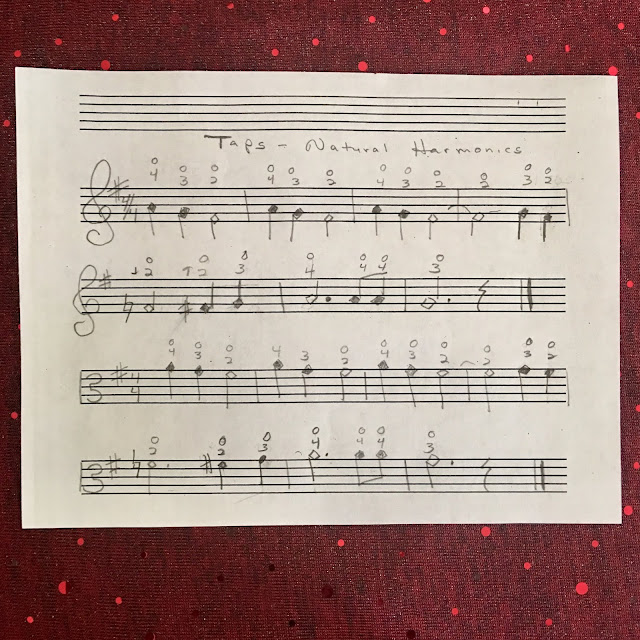Finding the Node for Clear Harmonics
 |
| Fingerings, listen to bugle taps to get the articulation. |
Divide the string into 4 parts. This is 3rd finger in the first position for the violin and viola. Sound the harmonic. Now go to the upper 4th near the bridge and sound harmonic. You will find this is the same pitch.
 |
| Handout from American String Teacher's Association Workshop |
 |
| The vibration of the string |
 |
| Using 1st harmonic at the middle of the string |
 |
| Finding the harmonics at a third of the string. |
 |
| For a large group, we use a rubber band rope with dark yarn so the students can see the oscillations. For a smaller group, an old phone cord works well. |
Link for Moving on to artificial harmonics from Paul Stein in Violinist.com
Hints:
It is easiest to practice just the first fingers in the beginning to get clean shifts.
Next do 1, play 4 solidly, then 1 solid with 4 soft for harmonic.
Then try moving between two artificial harmonics.
Your solid first finger is making an artificial nut and the 4th finger is finding the node for the harmonic a perfect 4th above the first finger. So you can sing "Here Comes the Bride" to help hear the interval.


Comments
Post a Comment